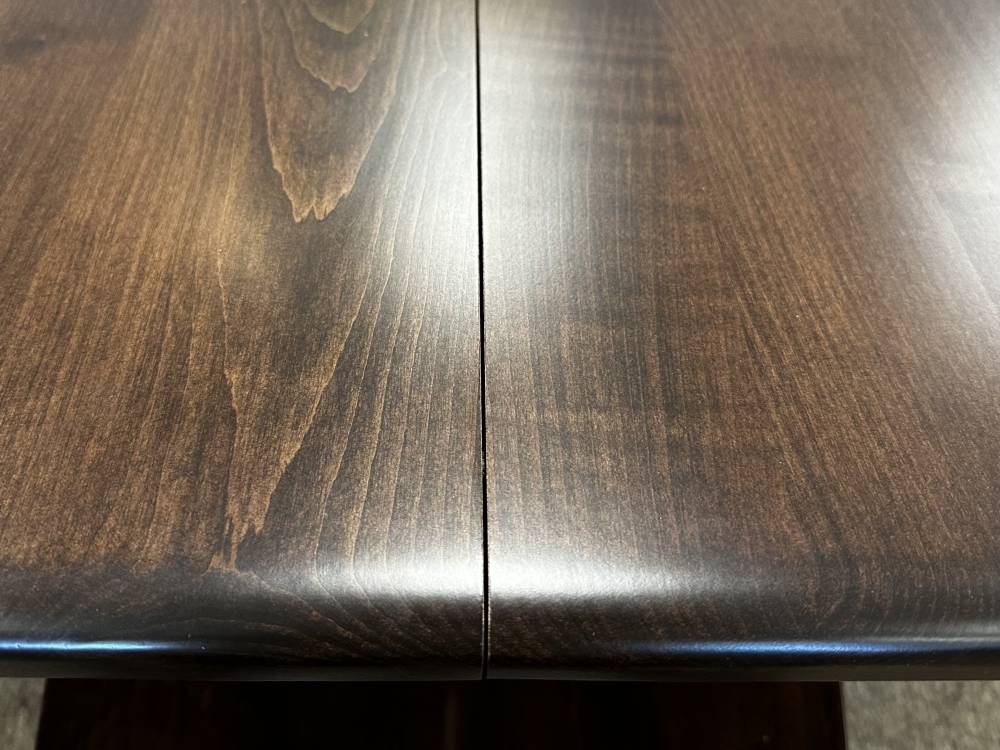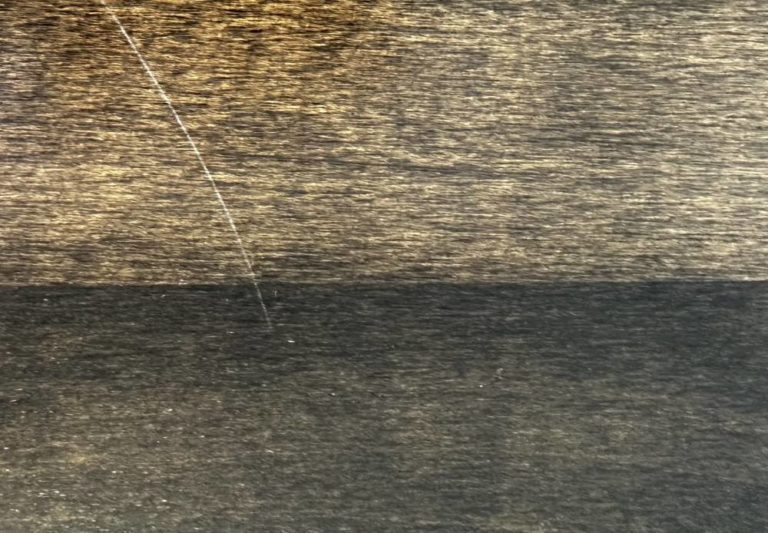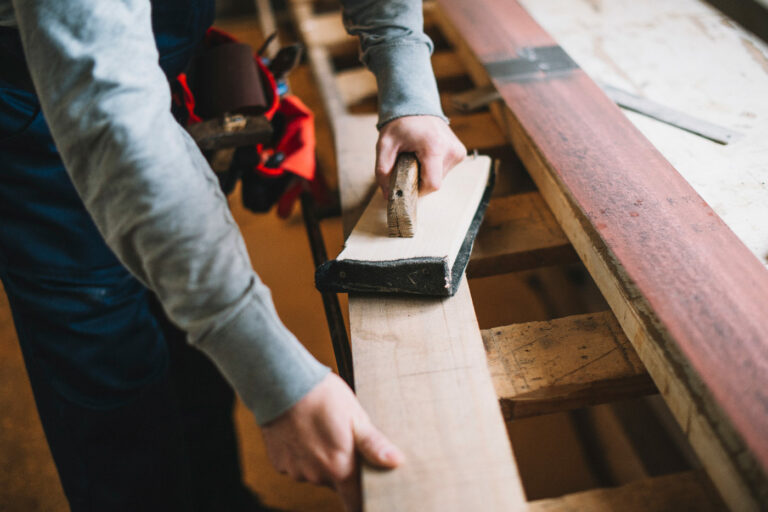My Table is Gaping
Our Amish builders specialize in crafting solid wood tables that are built to last. However, it’s important to note that natural wood is subject to some degree of expansion and contraction as it responds to changes in humidity and temperature.
As humidity rises, the table will swell, and the gap will be visible. In the dry season, the tabletop will shrink, and you might experience a gap where the two halves meet. This is not a defect, but rather a natural movement in the wood that occurs as moisture content fluctuates in response to relative humidity.
Most hardwoods are open grained, which means that even after protective finishes have been applied, solid wood furniture will still expand and contract. However, you can minimize (but not completely eliminate) these effects by keeping indoor humidity in the 40-45% range.

To ensure the longevity of your solid wood table, it’s important to keep it away from direct sources of heating and cooling and avoid storing it in attics or basements. By taking these precautions, you can enjoy the beauty and durability of your solid wood table for years to come.
Overall, table gaping is a completely normal occurrence on our tables and will ebb and flow throughout the year with humidity changes. These tables are not meant to have a tight seam 100% of the time because wood moves and needs some range to do so. If you are dealing with table gaping, please use a the proper mode (humidifier for dry season or dehumidifier for wet season) and give it a few weeks to see the difference in your table. Again, this is not something that needs to be a perfect tight seam, but it can be minimized based off humidity levels.


